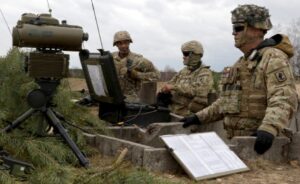The discovery of a new type of supernova illuminates a medieval mystery
Tuesday, 29 June 2021 07:07 A worldwide team led by UC Santa Barbara scientists at Las Cumbres Observatory has discovered the first convincing evidence for a new type of stellar explosion - an electron-capture supernova. While they have been theorized for 40 years, real-world examples have been elusive.
They are thought to arise from the explosions of massive super-asymptotic giant branch (SAGB) stars, for which ther
A worldwide team led by UC Santa Barbara scientists at Las Cumbres Observatory has discovered the first convincing evidence for a new type of stellar explosion - an electron-capture supernova. While they have been theorized for 40 years, real-world examples have been elusive.
They are thought to arise from the explosions of massive super-asymptotic giant branch (SAGB) stars, for which ther Unique use of ESA spacecraft 'housekeeping' data reveals cosmic ray behaviour
Tuesday, 29 June 2021 07:07 Using data originally gathered for spacecraft 'housekeeping' aboard ESA's Rosetta and Mars Express missions, scientists have revealed how intense bursts of high-energy radiation, known as cosmic rays, behave at Mars and throughout the inner Solar System.
Housekeeping data are gathered by most spacecraft and components, and is used by engineering teams to monitor spacecraft health and diagn
Using data originally gathered for spacecraft 'housekeeping' aboard ESA's Rosetta and Mars Express missions, scientists have revealed how intense bursts of high-energy radiation, known as cosmic rays, behave at Mars and throughout the inner Solar System.
Housekeeping data are gathered by most spacecraft and components, and is used by engineering teams to monitor spacecraft health and diagn OneWeb and BT to explore rural connectivity solutions for UK
Tuesday, 29 June 2021 07:07 OneWeb, the global communications network powered from Space, and BT (BT.L), one of the world's leading communication services companies, have signed a Memorandum of Understanding (MoU), to explore the provision of improved digital communication services to some of the hardest to reach parts of the UK.
The groundbreaking agreement between OneWeb and BT comes as investment in expanding mode
OneWeb, the global communications network powered from Space, and BT (BT.L), one of the world's leading communication services companies, have signed a Memorandum of Understanding (MoU), to explore the provision of improved digital communication services to some of the hardest to reach parts of the UK.
The groundbreaking agreement between OneWeb and BT comes as investment in expanding mode Orphan cloud discovered in galaxy cluster
Tuesday, 29 June 2021 06:00 Image:
Image:
New observations made with ESA’s X-ray XMM Newton telescope have revealed an “orphan cloud” – an isolated cloud in a galaxy cluster that is the first discovery of its kind.
A lot goes on in a galaxy cluster. There can be anything from tens to thousands of galaxies bound together by gravity. The galaxies themselves have a range of different properties, but typically contain systems with stars and planets, along with the material in between the stars – the interstellar medium. In between the galaxies is more material – tenuous hot gas known as the intercluster medium. And sometimes in
Europe considering concepts for human spaceflight
Tuesday, 29 June 2021 02:10
WASHINGTON — A bumper crop of applications for the European Space Agency’s astronaut corps is providing a boost to proposals for Europe to develop its own human spaceflight capability.
ESA announced June 23 that it received 22,589 applications in a solicitation that ended June 18.
Former airline exec Fredrik Gustavsson to lead Inmarsat strategy
Monday, 28 June 2021 21:02
TAMPA, Fla. — Inmarsat has named Fredrik Gustavsson, a former airline executive, as chief strategy officer in the British satellite operator’s third board appointment in three months.
Gustavsson was head of strategy and mergers and acquisitions at European airline easyJet from 2012 to 2019, where he oversaw deals including the purchase of parts of Germany’s Air Berlin.
Raytheon forms industry team to develop U.S. Army ground station
Monday, 28 June 2021 20:13
WASHINGTON — Raytheon announced June 28 it is teaming with seven aerospace and data analytics companies to develop a ground station for the U.S. Army that can process data from air and space sensors.
Raytheon and Palantir in January were selected to develop competing concepts for the Army’s tactical intelligence targeting access node, or TITAN.
Unique exoplanet photobombs Cheops study of nearby star system
Monday, 28 June 2021 14:00
While exploring two exoplanets in a bright nearby star system, ESA’s exoplanet-hunting Cheops satellite has unexpectedly spotted the system’s third known planet crossing the face of the star. This transit reveals exciting details about a rare planet “with no known equivalent”, say the researchers.
LightSail 2 has now been in space for 2 years, and should last even longer before re-entering the atmosphere
Monday, 28 June 2021 13:40
The Planetary Society's crowdfunded solar-sailing CubeSat, LightSail 2, launched on June 25th 2019, and two years later, the mission is still going strong. A pioneering technology demonstration of solar sail capability, LightSail 2 uses the gentle push of photons from the Sun to maneuver and adjust its orbital trajectory. Within months of its launch, LightSail 2 had already been declared a success, breaking new ground and expanding the possibilities for future spacecraft propulsion systems. Since then, it's gone on to test the limits of solar sailing in an ongoing extended mission.
One of the primary goals of that extended mission is to try out the spacecraft in different modes of operation, learning along the way how to sail efficiently and effectively. Even though two years of flying in the harsh orbital environment has begun to degrade the sail, software updates, learned experience, and careful debugging efforts have ensured that LightSail 2 is still flying exceptionally well. Shrinkage, crinkles, and delamination need to be continually monitored, but in spite of them, the team reports that LightSail 2's current "orbit decay rates…are the lowest we've seen since the early days of the mission.
South Korea’s top airline to develop propellant tank for smallsat launcher
Monday, 28 June 2021 12:07
SEOUL, South Korea — Korean Air, South Korea’s biggest airline, says it will develop common bulkhead propellant tanks for small satellite launch vehicles as part of the Ministry of Science and ICT’s “Space Pioneer” project.
The ministry plans to invest 211.5 billion won ($186.6 million) by 2030 in the “Space Pioneer” project, which aims to strengthen the global competitiveness of the domestic aerospace industry by reducing dependence on overseas products.
Giant comet found in outer solar system by Dark Energy Survey
Monday, 28 June 2021 10:21 A giant comet from the outskirts of our Solar System has been discovered in 6 years of data from the Dark Energy Survey. Comet Bernardinelli-Bernstein is estimated to be about 1000 times more massive than a typical comet, making it arguably the largest comet discovered in modern times. It has an extremely elongated orbit, journeying inward from the distant Oort Cloud over millions of years. It i
A giant comet from the outskirts of our Solar System has been discovered in 6 years of data from the Dark Energy Survey. Comet Bernardinelli-Bernstein is estimated to be about 1000 times more massive than a typical comet, making it arguably the largest comet discovered in modern times. It has an extremely elongated orbit, journeying inward from the distant Oort Cloud over millions of years. It i AFRL leaps forward in NTS-3 spacecraft development
Monday, 28 June 2021 10:21 The Air Force Research Laboratory is excited to announce that the Navigation Technology Satellite-3 (NTS-3) satellite navigation program is closer in the development of the spacecraft for its in-space demonstration, thanks to the delivery of its bus that will carry it to space in 2023.
In 2019, the U.S. Air Force designated NTS-3 as one of three Vanguard programs, which are priority initia
The Air Force Research Laboratory is excited to announce that the Navigation Technology Satellite-3 (NTS-3) satellite navigation program is closer in the development of the spacecraft for its in-space demonstration, thanks to the delivery of its bus that will carry it to space in 2023.
In 2019, the U.S. Air Force designated NTS-3 as one of three Vanguard programs, which are priority initia Getting a robot to take a selfie on Mars
Monday, 28 June 2021 10:21 Ever wondered how Mars rovers take a selfie? Color video from NASA's Perseverance shows how the rover captured the historic April 6, 2021, image of itself beside the Ingenuity Mars Helicopter. As a bonus, the rover's entry, descent, and landing microphone captured the sound of the arm's motors whirring during the process.
Selfies allow engineers to check wear and tear on the rover. But the
Ever wondered how Mars rovers take a selfie? Color video from NASA's Perseverance shows how the rover captured the historic April 6, 2021, image of itself beside the Ingenuity Mars Helicopter. As a bonus, the rover's entry, descent, and landing microphone captured the sound of the arm's motors whirring during the process.
Selfies allow engineers to check wear and tear on the rover. But the Virgin Galactic receives approval from FAA for Full Commercial Launch License
Monday, 28 June 2021 10:21 Virgin Galactic has announced that the Federal Aviation Administration has updated the Company's existing commercial space transportation operator license to allow the spaceline to fly customers to space.
The Company also announced that it has completed an extensive review of data gathered from its May 22 test flight and confirmed that the flight performed well against all flight objective
Virgin Galactic has announced that the Federal Aviation Administration has updated the Company's existing commercial space transportation operator license to allow the spaceline to fly customers to space.
The Company also announced that it has completed an extensive review of data gathered from its May 22 test flight and confirmed that the flight performed well against all flight objective Researchers aim to move an asteroid
Monday, 28 June 2021 10:21 An asteroid strike on Earth could be prevented by new technology launching into space this year, involving a Queen's University Belfast scientist.
Professor Alan Fitzsimmons from the Astrophysics Research Centre at Queen's is playing a role in two space missions that will measure how hard it is to deflect an asteroid. He will be telling people about it in an online public talk on World Ast
An asteroid strike on Earth could be prevented by new technology launching into space this year, involving a Queen's University Belfast scientist.
Professor Alan Fitzsimmons from the Astrophysics Research Centre at Queen's is playing a role in two space missions that will measure how hard it is to deflect an asteroid. He will be telling people about it in an online public talk on World Ast 